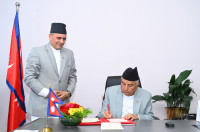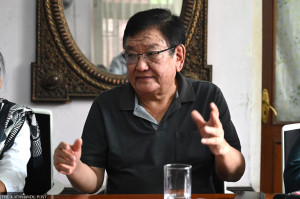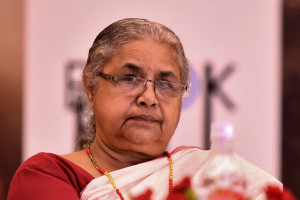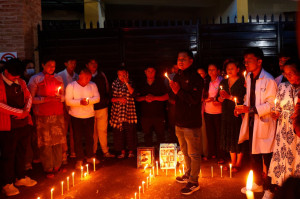Editorial
Armed menace
Laws on arms possession must be made more stringent
Two weeks ago, the police arrested billionaire Mahesh Bahadur Singh on charges of extortion, abduction and loansharking. Upon searching Singh’s home in Bhanimandal, Lalitpur, police discovered four .22 long rifles, two 12-bore shotguns and one air gun along with 97 rounds of .22 cartridge, 29 12-bore cartridges and four magazines. According to SSP Ramesh Kharel, police chief of Kathmandu, Singh would reportedly display his guns to the people who owed him money and ask them to choose the weapon they would like to be killed with. This kind of intimidation is definitely illegal but the larger problem concerns how Singh came to acquire the seven lethal firearms, all of which have legal permits, and whether an individual should be allowed possess such arms.
When it comes to arms possession, the Arms and Ammunition Regulation 1971 is very liberal. It allows an individual to own a total of three barrels and a family to own as many as six barrels in any combination, in addition to one air gun. The regulation also allows a person to own a 12, 16, 20 and 410-bore shotgun, musket, air gun and a .22-bore rifle for security or hunting purposes. However, people with licenced firearms different from the ones mentioned above can keep them in case they were obtained prior to the implementation of the regulation. Upon the death of the licence holder, the arms need to be presented to the government. But when the government issued a notice a year ago calling for people with illegal arms to return them voluntarily, only over 6,000 firearms were submitted. According to an issue brief published by the Small Arms Survey and Nepal Armed Violence Assessment in May 2013, there are around 440,000 private firearms in Nepal, of which 330,000 are unregistered craft weapons. Only one-eighth of the total firearms, or 55,000, are believed to be legally registered. Though this only amounts to only 1.7 firearms per 100 citizens, the presence of such a great number of lethal unregistered weapons is worrisome.
Furthermore, cheap firearms are readily available in blackmarkets across the bordering Indian states of Bihar and Uttar Pradesh and are easily smuggled into Nepal. To address this problem, security agencies in Nepal and India along the border districts and states must cooperate closely and share information on arms smuggling. Within Nepal, the Home Ministry must come up with creative ways to ensure the registration of firearms. Giving continuity to voluntary registration would be a good start. In the long run, the government should amend the Arms and Ammunition Regulations and make it more stringent so that men like Singh cannot get away with possessing such dangerous weapons. It will be difficult to ensure rule of law when even regular citizens possess heavy firepower.




 19.05°C Kathmandu
19.05°C Kathmandu













